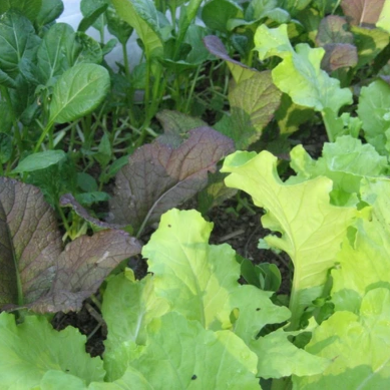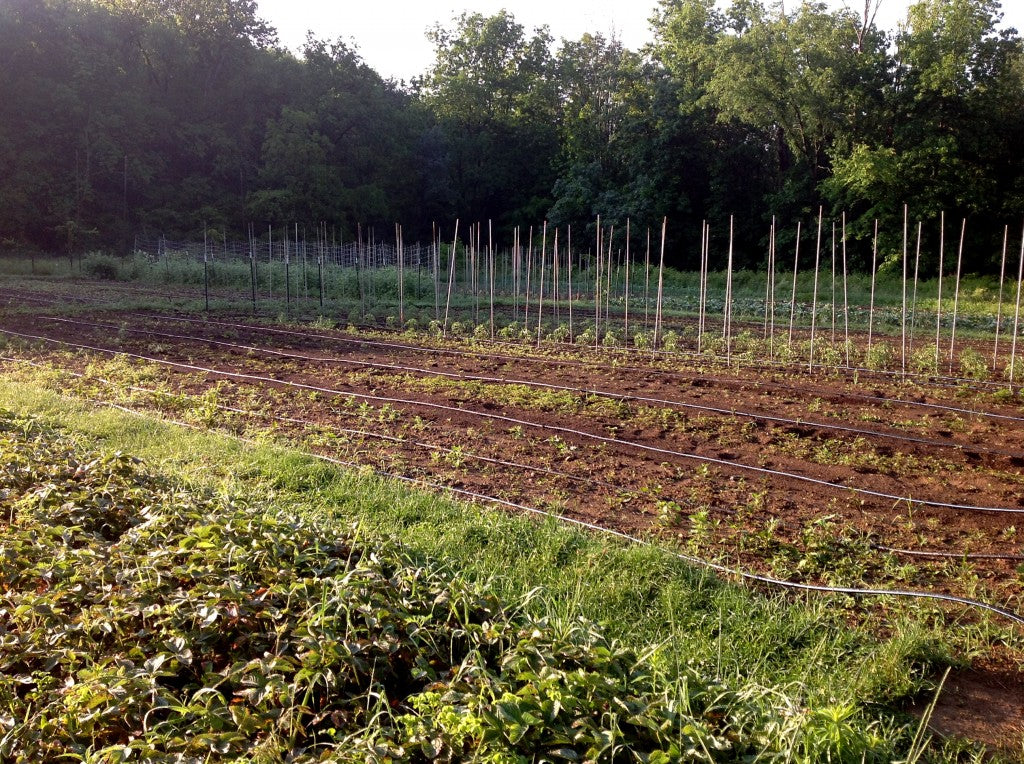
Growing in the Shadows: Shade Tolerant Varieties
Shade covers some of our fields too in early spring.
Plants love sunlight like humans love a good meal. Most garden annuals need at least 6 hours of sun per day for nourishment. No plants can grow in darkness, but fortunately, like humans, different plants have different diets and some are fairly modest.
Gardeners with a shady corner of yard or a porch in a tree's line of shadow--don't despair! Shade has a place in the garden. For vegetables that prefer cooler temperatures, partial shade can offer relief on hot summer days. It can also create a mildly different "micro-climate" and thus extend the spring and fall harvests of succession plantings. As northern gardeners, we are often guilty of focusing our efforts on heating up the garden, but there are benefits to cooling it off too. Sown in early spring, greens will persevere longer into the hot season if protected by some shade. The same is true for late summer sowings for fall harvests. Spinach, for example, can be planted in the fall as empty spaces open up, left over after other vegetables (like carrots or spent tomato plants) have been harvested. Spinach will grow in the shade, then overwinter to re-emerge in early spring.
If you've got a shady situation on your hands, look to some of the varieties listed below for inspiration.
NOTE: For the purposes of this post, we are writing about open garden spaces that receive 4-6 hours of light per day. Wooded and completely shaded areas are very difficult to grow annual garden varieties in.
FLOWERS
Focus on: Early flowers that thrive in early spring. Choose: borage, poppies, calendula, flax, snapdragons, and sweet peas.
Consider: Flowers that grow in containers. Smaller plants can usually tolerate less-than-ideal conditions. Choose Teddy Bear Sunflowers, Sparky French Marigolds, and Variegated Nasturtiums.
Avoid: Heat-loving, tall varieties such as Mexican Sunflowers, Skyscraper Sunflowers, and zinnias.
HERBS
Herbs are the most adaptable! Try them all but note that basil is the most sensitive to lack of sun (it prefers warm, dry conditions). Some herbs that adapt well to partial shade include: catnip, chamomile, chervil, chives, cilantro, marjoram, oregano, parsley, and savory.
VEGETABLES
The most shade tolerant edibles are leafy greens. They will grow with 3-4 hours of direct sunlight per day. They can also be harvested at any size; so, if they don't receive enough light, pick them young.
Focus On: Arugula, Lettuce, Chard, Kale*, Collards, Sorrel, Spinach, Parsley, Scallions, Mustard Greens, and Asian Greens.
*Other Brassicas such as Broccoli, Kohlrabi, and Cabbage will also grow in partial shade.
Consider: Root veggies are the next most tolerant. They require at least half a day's (4-6 hours) of sunlight. Shade accepting roots: Potatoes, Beets, Carrots, Turnips, and Radishes.
Avoid: The least shade approving plants are fruiting vegetables. Tomatoes, Peppers, Eggplants, Squash, Melons, and Cucumbers like full sun! But you can try these varieties in containers and, if you have limited full-sun space, move them into sunny areas as the season progresses.








